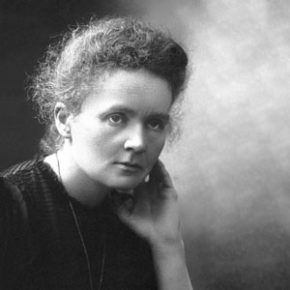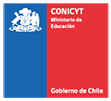Marie Curie

Foto: The Nobel Prize
Premio Nobel de Física 1903 – Chemistry 1911
Maria Salomea Skłodowska-Curie,,en,known as Marie Curie,,es,was born on,,es,in Warsaw,,es,It was a physical,,es,pioneering mathematics and chemistry in the field of radioactivity,,es,Marie was not only the first woman,,es,but the first person to receive two Nobel Prizes in different specialties,,es,and Chemistry,,es,and the first woman to teach at the University of Paris,,es,Marie married the scientist Pierre Curie and was the mother of who would later also receive a Nobel Prize in Chemistry.,,es,Motivated by the recent discovery of Antoine Henri Becquerel,,es,who showed that uranium salts emitted rays of an unknown nature,,es,without the need to be exposed to light,,es, conocida como Marie Curie, nació el 7 November 1867 en Varsovia, Polonia. Fue una física, matemática y química pionera en el campo de la radiactividad. Marie no solamente fue la primera mujer, sino que la primera persona en recibir dos Premios Nobel en distintas especialidades: Physics (1903) y Química (1911), y la primera mujer en hacer clases en la Universidad de París. Marie se casó con el científico Pierre Curie y fue madre de quien recibiría más adelante también un Premio Nobel en Química, Irène Joliot-Curie.
Motivada por el reciente descubrimiento de Antoine Henri Becquerel, que demostró que las sales de uranio emitían rayos de naturaleza desconocida, sin la necesidad de ser expuestas a la luz, Marie Curie further investigated this topic and discovered that compounds formed by thorium also spontaneously emit rays.,,es,They called this phenomenon radioactivity.,,es,As the radioactivity generated by some samples was stronger than expected,,es,Marie and Pierre suspected that there was another radioactive substance more powerful than uranium and thorium,,es,publicly announced that they had discovered a new element,,es,the polonium,,es,A few months later they announced their new find,,es,the radio,,es,He was awarded the Nobel Prize in Physics for the discovery of radioactive elements and in,,es,she was awarded a second Nobel,,es,the one of Chemistry,,ca,for his research on radium and its compounds,,es. A este fenómeno le llamaron radioactividad.
Como la radiactividad que generaban algunas muestras era más fuerte de lo que se esperaba, Marie y Pierre sospecharon que había otra sustancia radiactiva más potente que el uranio y el torio, y en 1898 dieron a conocer públicamente que habían descubierto un nuevo elemento: el polonio. Unos meses después anunciaron su nuevo hallazgo: el radio.
In 1903 le concedieron el Premio Nobel de Física por el descubrimiento de los elementos radiactivos y en 1911 la otorgaron un segundo Nobel, el de Química, por sus investigaciones sobre el radio y sus compuestos.
Marie Curie was appointed director of the Paris Radio Institute in,,es,and the Curie Institute was founded,,es,Died in,,es,product of aplastic anemia,,es,which is suspected to have been caused by his high exposure to radiation,,es 1914 y se fundó el Instituto Curie. Murió en 1934 producto de una anemia aplásica, la que se sospecha fue provocada por su alta exposición a la radiación.



